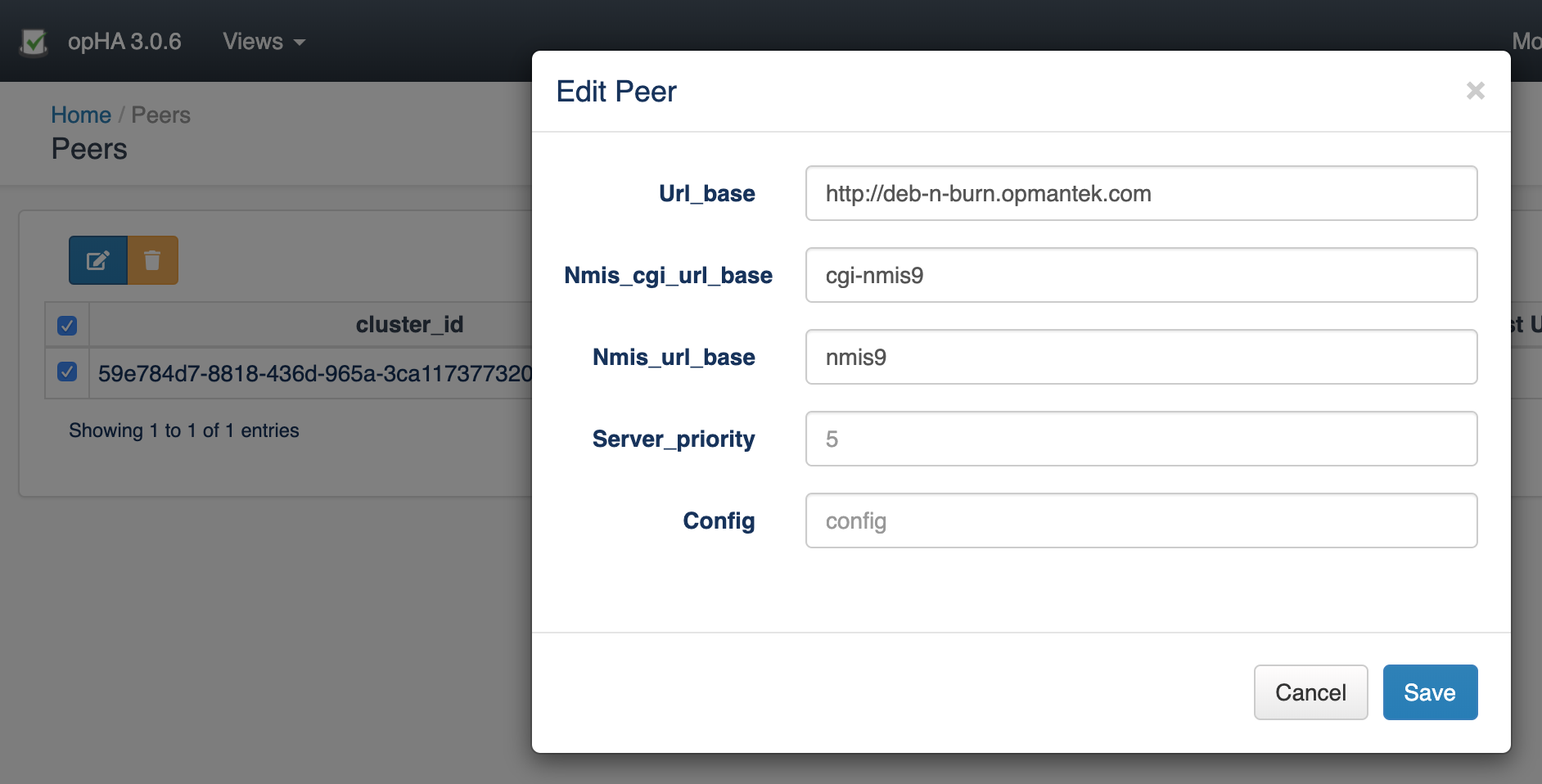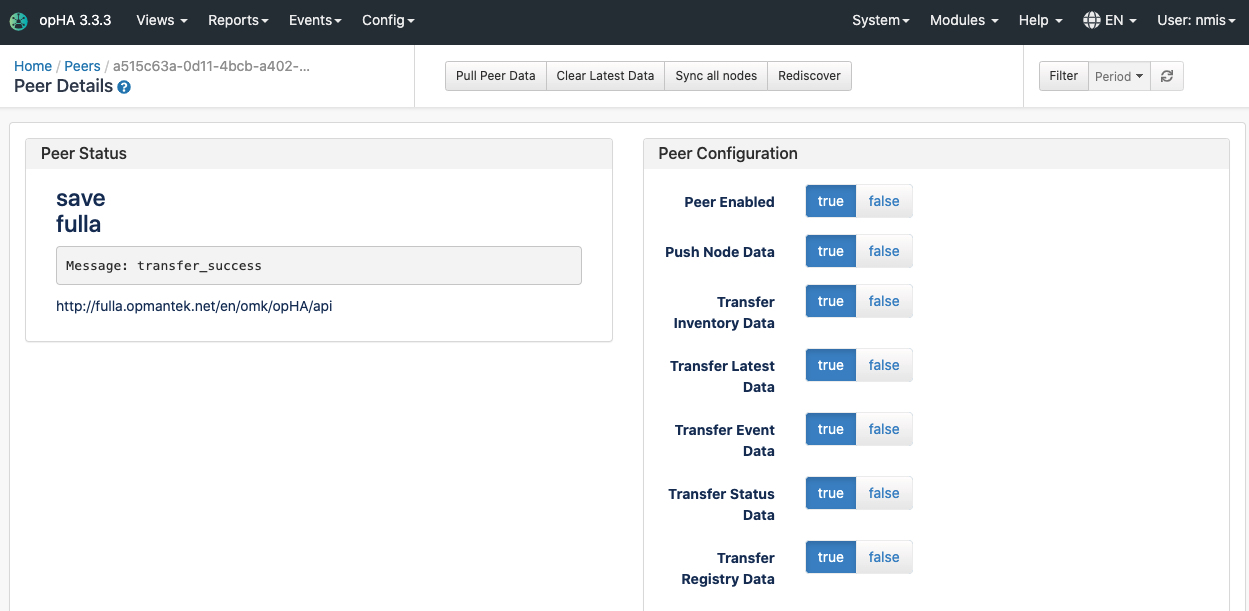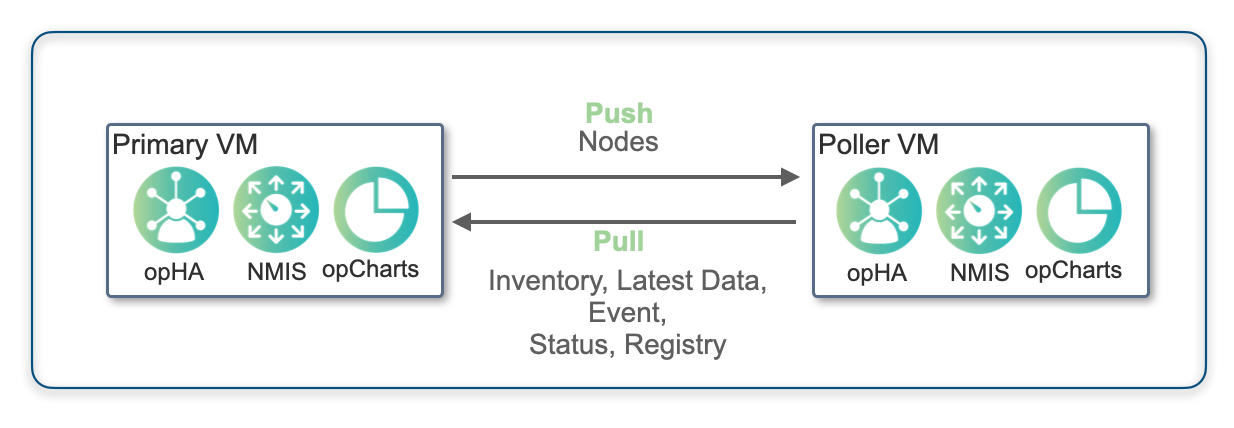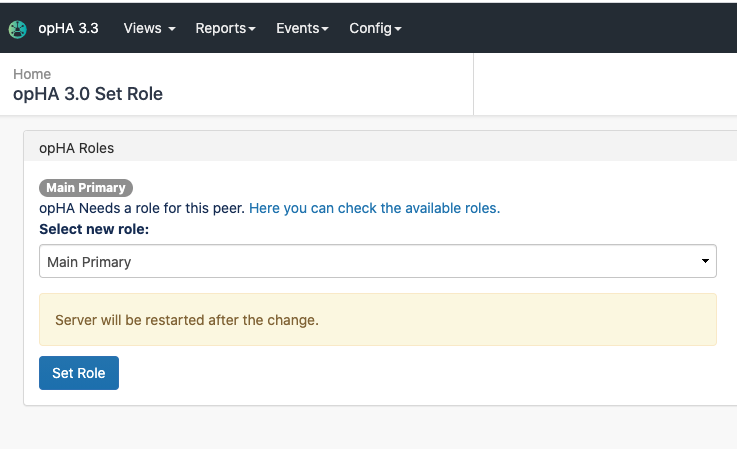...
We can add pollers using the Peers screen, in Discover New PeerPoller button:
We need to introduce the follow information for the Discovery:
...
- URL of the peer
- Username and Password OR the SharedKey
opHA Edit a Peer
Once the peer was successfully discovered, we can edit the peer configuration - but it is not needed by default:
...
| Info | ||
|---|---|---|
| ||
You MUST set the "opha_url_base" on the POLLER to the https:// url for the poller before doing discovery. In setting opha_url_base you must also set the opha_hostname to match the fqdn. If the opha_url_base is blank the Primary will connect to the poller but on receipt of the pollers information it will swap the https:// URL for http:// and the discovery will then fail. |
opHA Edit a Peer
...
Once the peer was successfully discovered, we can edit the peer configuration - but it is not needed by default:
This will edit the nmis information for the poller. It will be used in NMIS to redirect a node to a poller.
opHA Data Synchronisation
...
Once a peer is added, we can pull the peer to synchronise all the data:
Please note that the nodes are pushed to the pollers, but the other data is pulled:
We can also use the opHA cli tool to synchronise the data - and use it for another actions:
| Code Block |
|---|
/usr/local/omk/bin# .bin/opha-cli.pl Usage: opha-cli.pl act=[action to take] [options...] opha-cli.pl act=discover url_base=... username=... password=.... opha-cli.pl actrole=pull [data_types=X... mirror=...] opha-cli.pl act=<import_peers|export_peers|list_peers> opha-cli.pl act=delete_peer {cluster_id=...|server_name=...} opha-cli.pl act=import_config_datapull [data_types=X...] [peers=Y] [force=t] pull data types except nodes primary <-- peers ... |
With this tool we can automate the synchronisation process with a cron job to keep all the data up to date.
Once we have synchronise a peer we will be able to see its data from NMIS or opCharts from the Primary.
opHA Roles
...
We can assign see the peer roles to peers using the configuration menu > Role Mapping:
...
When we create a poller, we should choose which role will be a peer, a poller or a mirror. Once we discover a peer, opHA primary will send the role to the peer. From the role mapping menu, we would be able to see a peer server and the role assigned, and also click in the button to resend the role.
Change the role
To set up the local role, we can go to the menu Views > Set Role:
Please note, the server will be restarted after the change, because all the server functionality will change.
opHA Centralised Configuration
...









